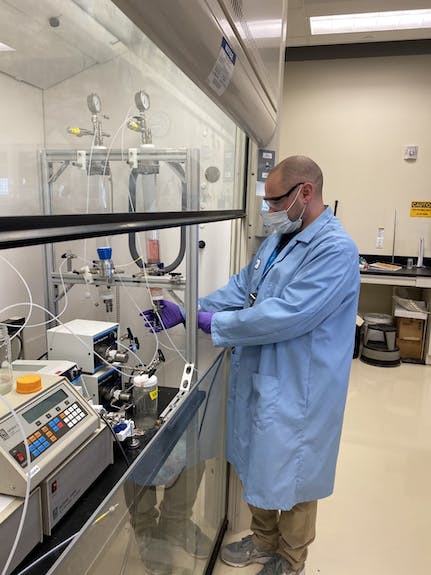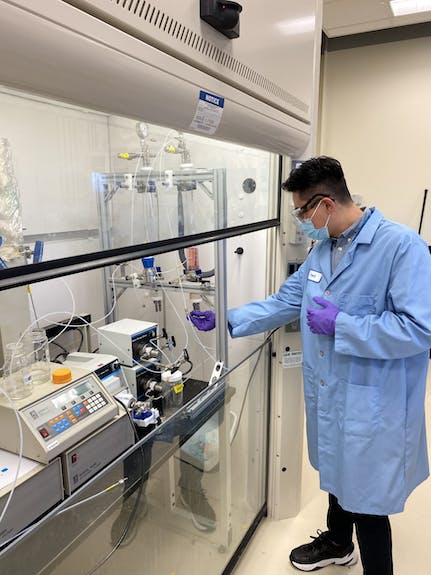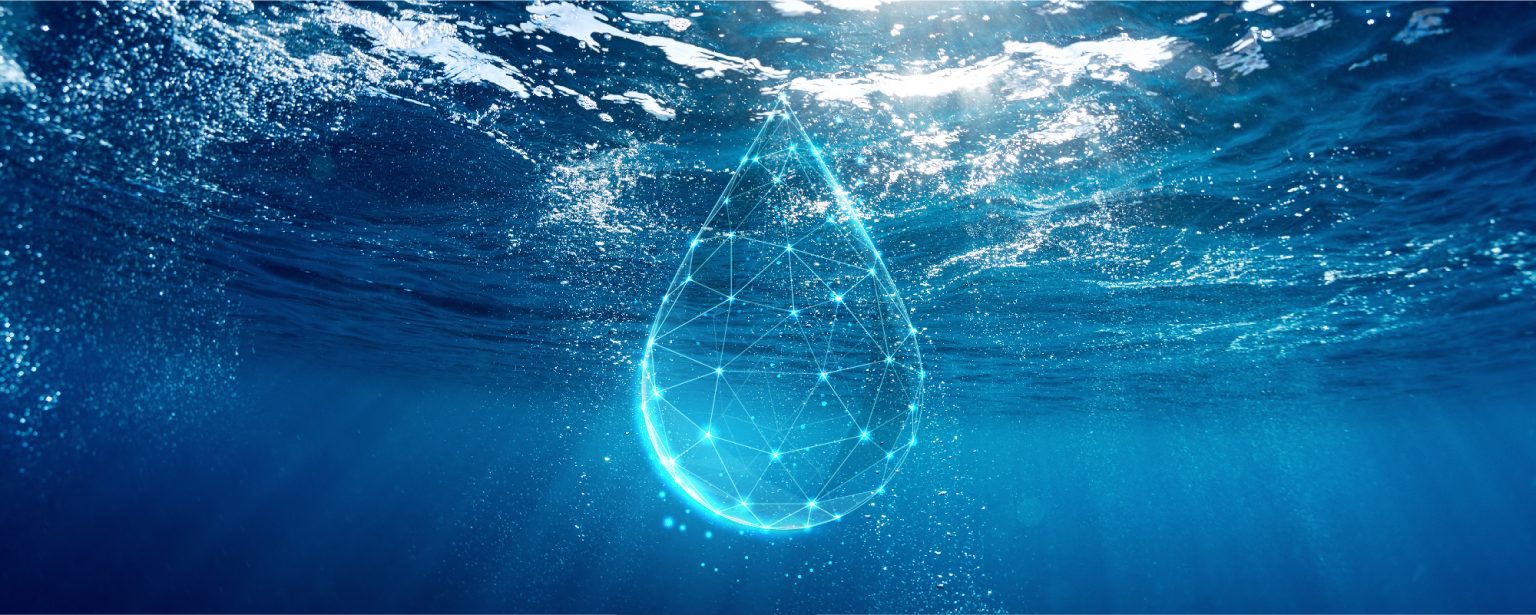In “The Rime of the Ancient Mariner,” the poet Samuel Taylor Coleridge got it right: Sometimes you are surrounded by water but don’t have a drop to drink. That happens at sea and on land, where water may have a salinity somewhere between fresh water and seawater. Such brackish water is common in some places, like the American Southwest.
Now, researchers at Idaho National Laboratory have demonstrated what could be a new and potentially useful way to deal with salty water, thereby improving water availability. The challenge of turning brackish water into something drinkable runs into the problem of what to do with an undesirable byproduct: water with a lot of salt or brine.
“We’re really limited on how much we can treat or recycle our water, not by the technologies that will recycle the water but by the brine that they produce. Because if they produce brine, it’s a toxic waste,” explained Aaron Wilson, chemical separations group supervisor and water technology research lead at INL.
BOILING BELOW ZERO

Wilson is co-author of an August 2020 RSC Advances paper that described work that could solve such water woes. The INL group did this research in conjunction with a group from MIT headed by Professor John Lienhard. With funding from the Department of Energy and INL’s Laboratory Directed Research & Development program, the scientists looked at organic solvents. The idea was to see which one of a group of 12 would be best at dealing with these water-related issues in ways that are more energy-efficient and less costly than current methods.
“Our big innovation was to look at a solvent that was biased to separate from water at a very low boiling point,” Wilson said. He noted that solvent-based processes have been known for decades, but that getting all of the residual solvent out has been a problem.
Of the solvents investigated, the researchers found that dimethyl ether, or DME, performed best and thus could be the basis for solving water problems. In part, this was because of DME’s physical characteristics. A condensable gas, DME is hydrophilic, and this love of water means it will take up water but not salt. Also, dimethyl ether boils at a frigid -24 C or about -11 F.
The low boiling point made getting the DME out of a water-solvent mix or elsewhere relatively easy. A little heat turns the solvent into a gas, making it fairly simple and inexpensive in terms of energy and equipment to separate out.
SURPRISINGLY EFFICIENT

What the group didn’t expect when they began the research, according to Wilson, is how well DME displaced water.
Under certain conditions, putting one part of DME into solution or an object resulted in the removal of the same amount of water, an outcome that theory says shouldn’t have happened. The scientists are still investigating why this takes place.
Research done so far shows that DME can be used in a number of different ways.
To get rid of brine or wet solids, the solvent could be pressurized to about five atmospheres, or five times air pressure at sea level, which would cause the DME to condense into a liquid. This could then be bubbled through the problem water in a tank, where the solvent would push the salt out of solution. Salts and solids end up at the bottom of the tank, ready for extraction and disposal. The gaseous water-solvent mixture at the top of the tank could then be piped into another tank for separation, resulting in distinct streams of water and DME. The solvent could then be reused, heading back to the start of the process.
INDUSTRY INTEREST
Estimates are that using DME can cut the energy cost of handling brine by at least 50%. That potential has attracted attention from industrial partners, such as water treatment specialist Trevi Systems of Petaluma, California. CEO John Webley said the company focuses on ways to remove salt from water, with target markets being cities in the Southwest that are far inland.
Current technology can economically remove about two-thirds of the salt in water, Webley pointed out. The result, though, is some water that is fresh enough to drink and some where the salt has been concentrated. This water is too salty for treatment and too expensive to dispose of. What’s needed is way to finish the job, so that only water-free salt is left.
A DME-based process could fit the bill of what’s required, Webley noted, because it would hit cost targets, use nontoxic materials and not add to greenhouse gas emissions. “We’ve built a model, a techno-economic model, and everything checks out,” he said.
NEXT STEPS
The next step would be to build a prototype, something currently being considered. If the demonstration unit works as expected, the company would then look into securing further funding with an eye on eventual commercialization.
Another broad possible use of DME would be in drying. Today, commercial scale drying of food, wood and other products accounts for 10% of all the industrial energy use in the United States. Getting rid of unwanted moisture using DME would be as much as 80% less costly compared to drying through heat-based evaporation.
“The DME replaces the water in a porous media and pushes the water out. Then it can be pulled out pretty easily,” Wilson said in explaining the mechanisms behind this performance improvement.
As is the case with water treatment, his group is interested in working with industrial partners to explore this application.







